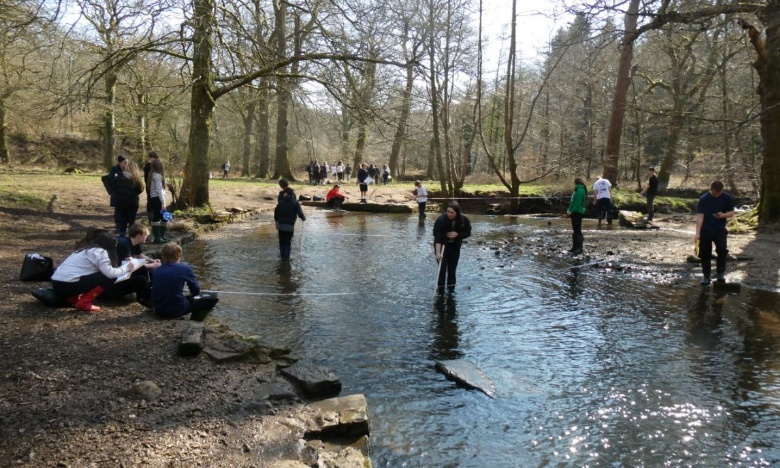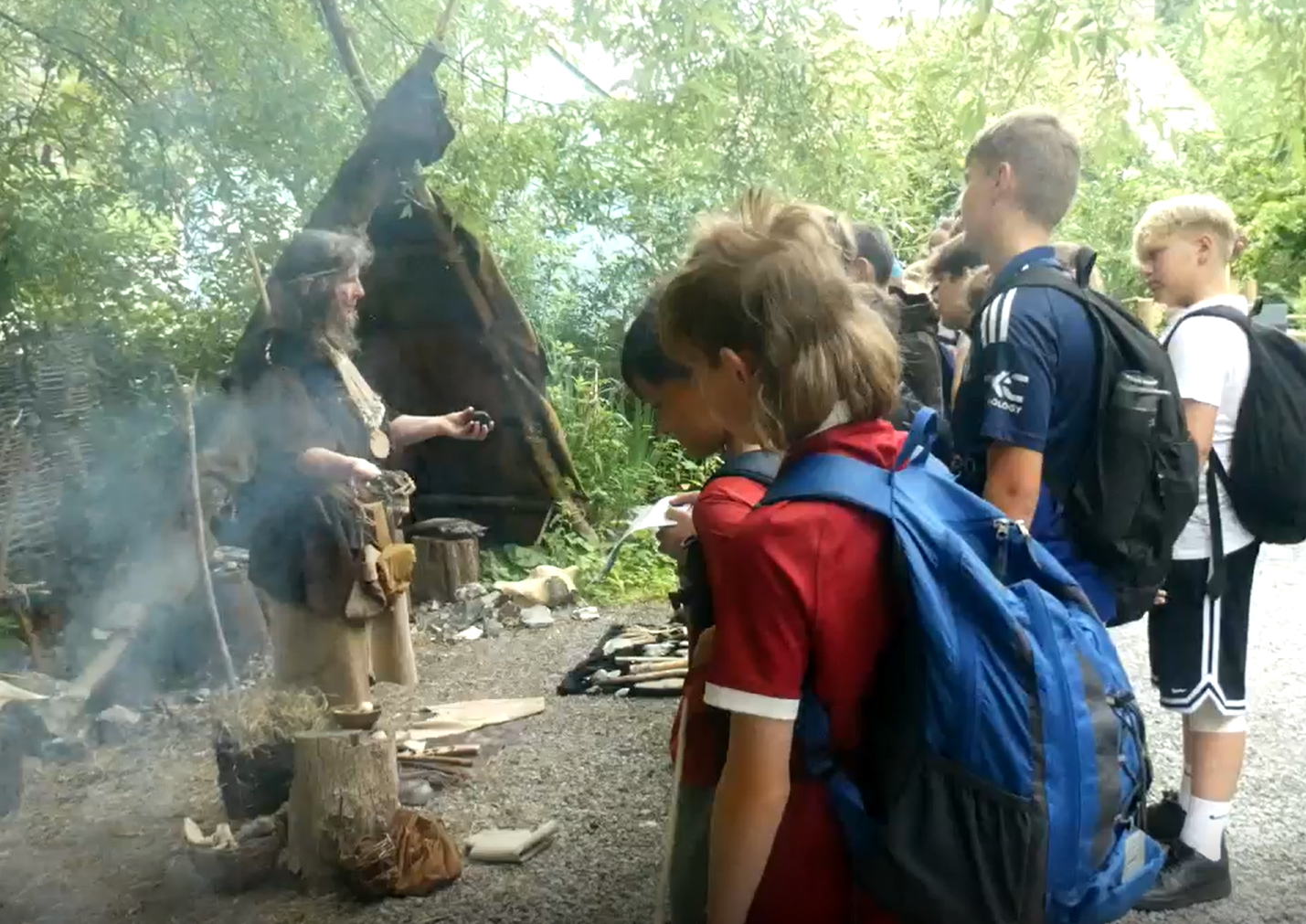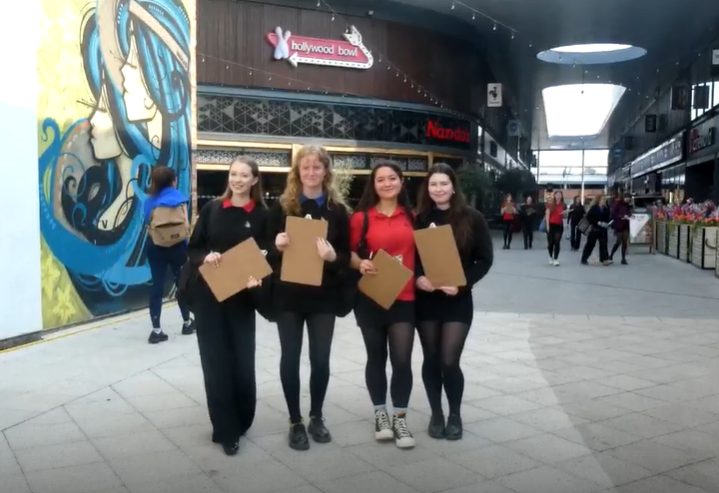A summer of fieldwork in the geography department

Please enter an introduction for your news story here.
Year 7 visited Cheddar Gorge
Year 7 students enjoyed an exciting and educational visit to Cheddar Gorge on the 18th and 25th June. Across both days, students visited Gough’s Cave, the Cheddar Museum, Jacob’s Ladder, and of course, the ever-popular gift shop.
Throughout the trip, pupils impressed staff with their excellent behaviour and enthusiasm. They learned about the fascinating history of Cheddar Man, discovered how the gorge was formed, and carried out fieldwork activities in Cheddar town as part of their geography studies.
The sweet shop proved to be a definite highlight for many!
A big thank you to all staff who supported the trip.

Year 8 explored the microclimates of Balcarras
Year 8 students recently put their geographical skills to the test by exploring microclimates around the school site following the route to enquiry approach.
The enquiry began with students setting their own hypotheses, such as “The temperature will be highest on the playground” or “wind speed will be greater in open spaces than near buildings.” With their questions in mind, they headed out around the school grounds to collect primary data on temperature, wind speed and direction and cloud cover at various locations.
Back in the classroom, students used their data to produce graphs, helping them to visualise patterns and compare different microclimate zones across the site. They then drew conclusions based on the evidence they had gathered—linking their results to concepts like aspect, surface type, and proximity to buildings.
To complete the enquiry, pupils evaluated the reliability of their methods and considered how they could improve the investigation in future. It was fantastic to see Year 8 students taking ownership of their learning and working as real geographers - well done to all involved!
Year 9 investigated biodiversity around the school site
Year 9 geographers have been exploring biodiversity on the school site. The focus of their investigation was to compare the variety and quality of habitats using a biodiversity bipolar survey, helping them to assess how suitable different areas are for supporting plant and animal life.
Students worked in groups to survey multiple locations around the school, recording data on factors such as plant variety, ground cover, and human impact. They also practised their field sketching skills, carefully observing and illustrating the features of each habitat to support their findings. After analysing their results, they discussed how the school grounds could be improved to support more wildlife - suggesting ideas such as wildflower planting, creating bug hotels, and reducing paved surfaces.
Year 10 investigated changing river characteristics of Blackpool Brook and assessed the success of regeneration in Bristol’s Temple Quarter
As part of the AQA GCSE Geography course, Year 10 students recently completed two exciting fieldwork investigations—one focusing on physical geography and the other on human geography.
For their physical fieldwork, students visited Blackpool Brook to investigate how river characteristics change downstream. They measured river width, depth, velocity, and the size and roundness of bedload at multiple sites along the brook. Particular attention was given to the impact of a weir on flow and channel shape This hands-on experience allowed students to apply key concepts from the river landscapes topic and practise collecting and analysing geographical data in a real-world environment.
For their human geography fieldwork, students travelled to Bristol’s Temple Quarter to assess the success of regeneration in the area. Using techniques such as Environmental Quality Surveys (EQS) and a building decay survey, they gathered data on land use, urban design, and investment. A guided boat trip through Bristol’s historic harbour gave students a unique perspective on the city's transformation and regeneration challenges.
Both trips gave Year 10 valuable experience with fieldwork methods and data interpretation—essential preparation for the Paper 3 exam. Well done to all students for their enthusiasm, teamwork, and careful data collection!

Year 12 develop their fieldwork skills around Cheltenham
In early June, our Year 12 Geography students took part in a fieldtrip around Cheltenham to develop key skills for their Non-Examined Assessment (NEA) and to explore real-world geographical issues. The day focused on urban regeneration, microclimate patterns, and the concept of place – all essential themes in the A-level course and potential NEA themes.
The morning was spent comparing two contrasting parts of the town: the regenerated Brewery Quarter and the Lower High Street. Pupils used a variety of fieldwork techniques, including an Environmental Quality Survey (EQS), a regeneration survey, and a Clone Town survey, to assess the success and impact of regeneration. This hands-on approach allowed students to critically evaluate how investment and planning have reshaped urban spaces.

From there, students followed a transect route from the town centre back to school, recording microclimate data at set points. Using handheld equipment, they measured temperature, wind speed and direction, and air pollution levels. This enabled them to explore how the urban environment influences climate at a local scale and how these factors change with distance from the CBD.
In the afternoon, the group visited Charlton Kings to explore the concept of local place. Pupils reflected on how local identity is shaped by factors such as the built environment, land use, and open spaces.
The fieldtrip not only reinforced classroom learning but also provided students with the confidence and skills to begin planning their own NEA projects, each centred around a geographical theme of their choice. Well done to all the students for their excellent engagement and thoughtful fieldwork throughout the day.
Miss Searle
Head of Geography
